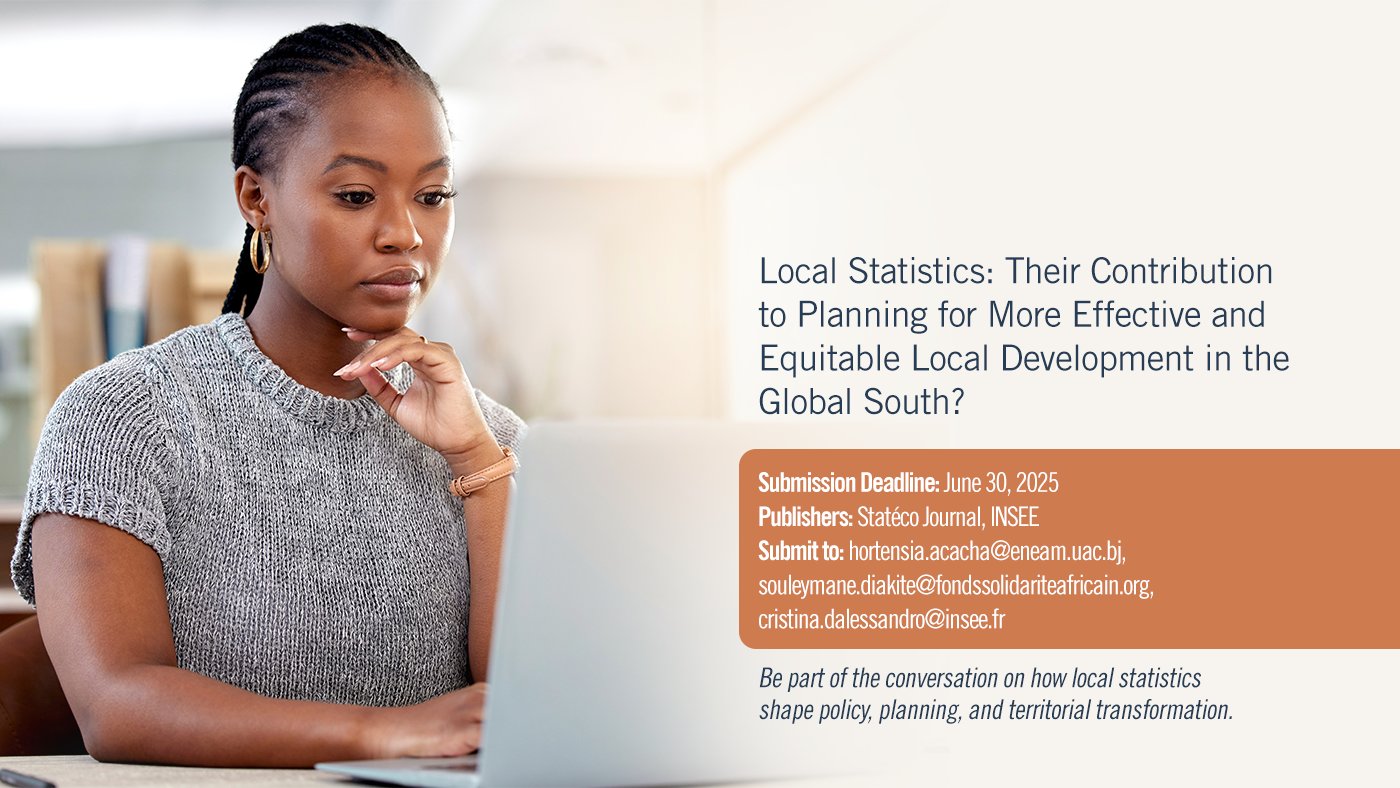
Local Statistics: Their Contribution to Planning towards a More Effective and Equitable Local Development in the South?
Editors in chief
Acacha Hortensia Vicentia, Assistant Professor, Ecole Nationale d’Economie Appliquée et de Management /Université Nationale d’Abomey-calavi (eneam/uac), Benin. Email: hortensia.acacha@eneam.uac.bj
Souleymane Diakité, Monitoring and Evaluation Expert, Fonds de Solidarité Africain. Email: souleymane.diakite@fondssolidariteafricain.org
Context
After Independence, developing countries have handled to their states, responsible of ensuring employment and the wellbeing of their citizen, the task of their economic growth and development. The numerous recent crises have furthermore weakened these countries, witnessing a negative evolution of some strategic indicators, such as unemployment rate, inflation and overall poverty levels. Between these two periods, the failure of the Bretton Woods-lead structural adjustment programs increased inequalities within societies and territories.
Institutional and territorial reforms created a variety of degrees of decentralization, strengthening, despite their limitations, relations between national powers and local communities. Most African countries experienced two or three decades of decentralization, producing valuable experiences, but also doubts and challenges. In other developing countries outside the African continent, these first experiences had similar mixed results.
In this special issue, Statéco aims at gathering papers on local statistics related to these territorial reforms, to public policies and to the changes brought within the societies concerned.
Local data tangibly inform on local territories and help analyzing territorial transformation. These statistics also contribute to better territorial planning and are useful evaluation tools for the United Nations Sustainable Development Goals of the 2030 Agenda.
Local statistics help understanding changes in territories and in planning. They effectively support enterprises in their choice of location. They explain geographical forms and spatial accessibility. They enhance the effectiveness of prospective studies on spatial transformation. They facilitate the production of simple diagrams illustrating complex phenomena. They are multidisciplinary tools of development, facilitating effective and systemic decision-making. They illustrate public community choices.
Nowadays, analyses based on local statistics and econometrics are in constant growth. They are mainly published in regional science and quantitative geography journals, but also in journals of economics or statistics, ecology, sociology, political sciences, etc. The recognition of the role that spaces play in econometrics and the development of advanced modeling tools may explain this development. To this extent, important efforts have been made in recent years to give robust statistical basis to spatial econometric models. Technical tools, such as geographic information systems (GIS) or programs analyzing local data, such as GeoDa or libraries for the statistical software R are increasingly adapted to these needs. The availability of local scale databases has encouraged researchers to develop appropriate analytical methodologies and more adapted to statistics.
This special issue of the Statéco journal presents this analytical domain. It invites papers on local statistical analyses, territories, data spatialisation or even on the mixed technical use of various data sources (population census, surveys, satellite images, etc.). Il also wants to reach, for this special issue, a wide range of disciplines: statistics, economy, political sciences, sociology, geography, etc.
About the Statéco Journal
The methodological journal Statéco, created in 1972 and published on the Insee website, is an international peer-reviewed journal, accessible online free of charge (https://www.insee.fr/fr/information/2116798). It showcases analyses and experiences of statistical cooperation in countries in the Global South.
Process and calendar
Original papers must be sent not later than June 30th 2025 to the three following email addresses:
- hortensia.acacha@eneam.uac.bj ;
- souleymane.diakite@fondssolidariteafricain.org;
- cristina.dalessandro@insee.fr
Only authors of accepted papers will be contacted in June 2025.
The special issue is scheduled to be published in the second half of 2025
References
ANSELIN L. (1988). Spatial econometrics: methods and models. Kluwer Academic Publishers, Dordrecht.
PHAM T.-T.-H., APPARICIO P., LANDRY S., LEWNARD J. (2017). Disentangling the effects of urban form and socio-demographic context on street tree cover: A multi-level analysis from Montréal. Landscape and Urban Planning 157 422-433.
APPARICIO P., GELB J., DUBE A.-S., KINGHAM S., GAUVIN L., ROBITAILLE E. (2017). The approaches to measuring the potential spatial access to urban health services revisited: Distance types and aggregation-error issues. International Journal of Health Ge ographics 16 (32), 1-32.
| BEENSTOCK M., FELSENSTEIN D. (2012). Nonparametric estimation of the spatial connectivity matrix using spatial panel data. Geographical Analysis 44 (4): 386-397.
LE GALLO J., THOMAS I. (2017). Statistique, économétrie et espace : progrès et défis en science régionale. Revue d’économie régionale et urbaine 1-2: 9-26. |

